Transcona Museum: Story Of The Railway City Now Part Of Winnipeg
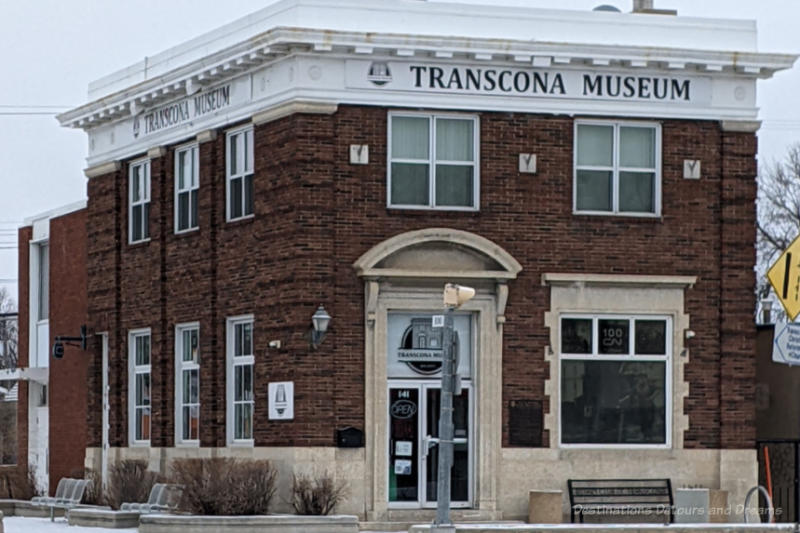
Transcona Museum in Winnipeg, Manitoba, Canada spotlights the history of Transcona, once its own city before amalgamation with Winnipeg in 1972
Before 1972, what is now Winnipeg, Manitoba, Canada was a collection of 13 different municipalities. The City of Transcona was once of those. The Transcona Museum tells the story of that community, located in the eastern end of Winnipeg.
Transcona got its start in 1908 when the Grand Trunk Railway and National Transcontinental Railway chose a plot of land east of Winnipeg to build a repair and maintenance shop. The town was built to provide homes for the workers and their families. Transcona was incorporated in 1912. By 1916, it was the second largest town in Manitoba. It gained city status in 1961.
The town’s name commemorates the railway that gave the town its existence. The story is that the name was chosen in a contest and is a combination of “Transcontinental” and “Strathcona.” Lord Strathcona headed one of the groups responsible for constructing the Canadian Pacific Railway, the transcontinental railway built to connect eastern and western Canada. He drove the last spike in 1885.
The Transcona Museum is located on the main floor of a two-story brick building that was built between 1924 and 1925 as a branch for the Bank of Toronto. The bank vacated the building in 1941. In 1943 the Town of Transcona purchased the building and used it for municipal offices. The museum moved into the building in 1979.
The museum’s collection includes documents and photographs, over 4,000 community-based artifacts, 900 clothing and textile items, archaeological artifacts, and natural history artifacts, including 8,000 butterfly and moth specimens.
The museum changes its exhibits on a yearly basis. It closes for several weeks after Manitoba’s school spring break (which is at the end of March/beginning of April) to do that. Although the exhibits change from year to year, they all showcase the histories and stories of Transcona. So, you will find some recurring themes.
Look for a collection of photographs illustrating historical Transcona. The museum’s archives hold over 40,000 textual materials, photographs, newspapers, maps, and blueprints, and more.
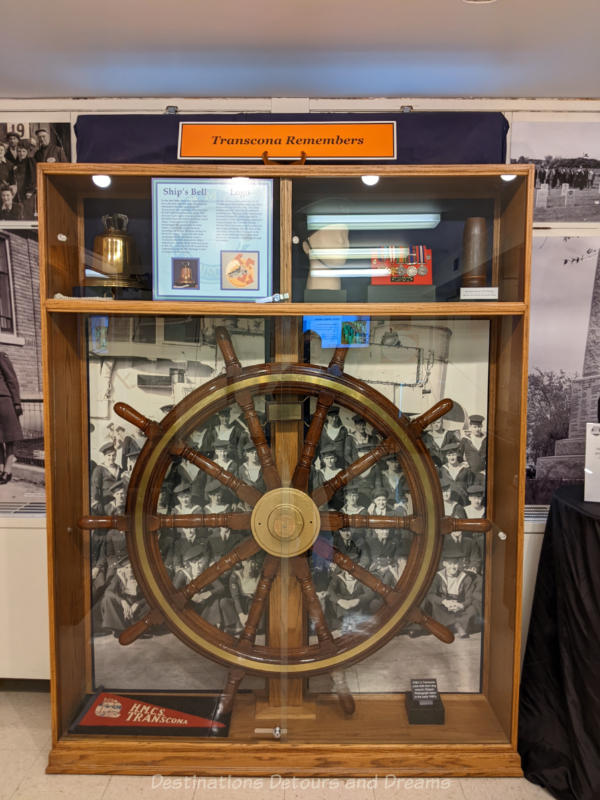
The museum recognizes Transcona veterans and remembers events of World War I and World War II. During both World Wars, portions of Transcona Shops became munitions factories. During World War II, an area east of Transcona became the site of an explosives manufacturing facility.
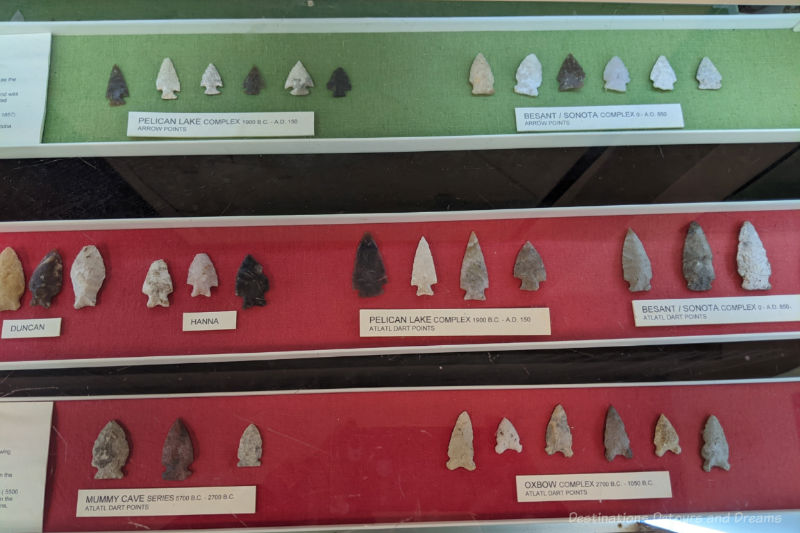
The Transcona Museum houses a collection of 3,500 objects of cultural and historical significance pertaining to Manitoba’s First Nations, Inuit, and Métis communities. The majority of objects were collected by amateur archaeologist Cecil H. Patterson from about 80 archaeological sites across the province and through trade with collectors and Indigenous peoples. Signage in the museum about the collection also noted that the trading and selling of Indigenous artifacts are no longer permitted and that all archaeological excavations today require permits and full documentation. In 2019, the Transcona Museum became a partner in Winnipeg Indigenous Accord, a living document intended to guide shared commitment to the Journey of Reconciliation in Winnipeg. The museum is dedicated to discovering more information about their present collection.
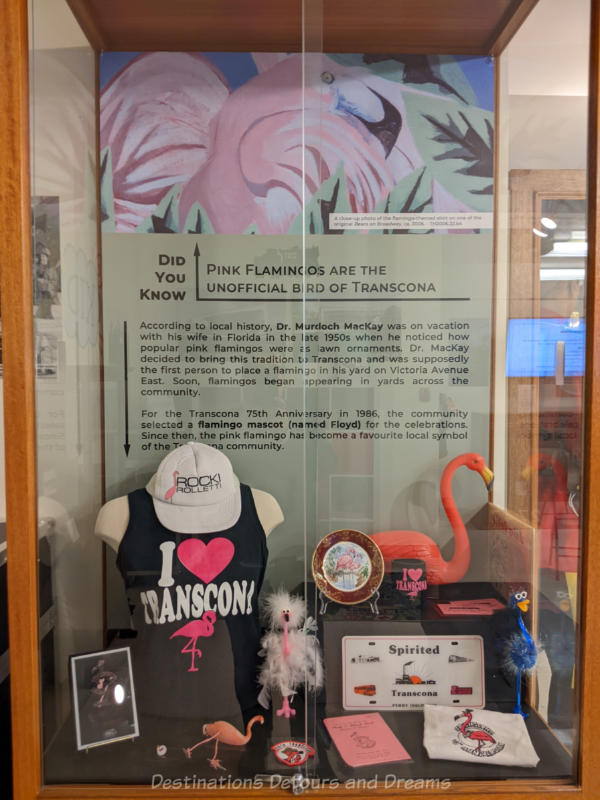
An exhibit from a past year featured pink flamingos, the “unofficial bird of Transcona.” For some time, Winnipeggers associated pink flamingos with Transcona. The story is that Dr. Murdoch MacKay noticed how popular pink flamingos were as lawn ornaments while on vacation in Florida during the 1950s. He decided to bring this tradition to Transcona and was the first person to place a flamingo in his yard. Soon flamingos began appearing in yards across the community. Apparently, there was a resurgence in their popularity in the 1980s. While, I haven’t seen a pink flamingo on a lawn in my recent drives through Transcona, it does remain a symbol of the community.

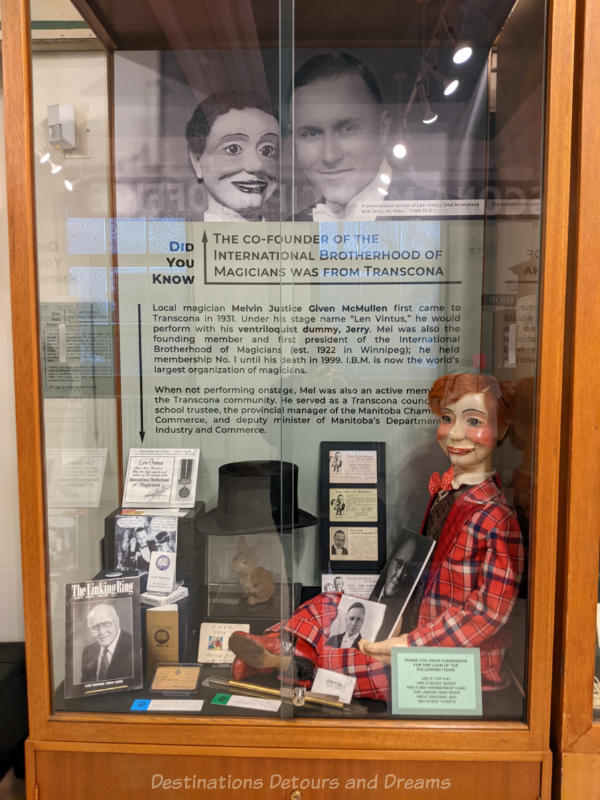
An exhibit during the 2023-2024 year honoured Melvin Justice Given McMullen, co-founder of the International Brotherhood of Magicians. The International Brotherhood of Magicians was formed in 1922. It quickly grew to become the largest body of magic entertainers and hobbyists in the world. Note that there is a plaque on the outside of what was once the Union Bank Building (504 Main Street) in Winnipeg’s Exchange District about the organization, which at one time met on the 7th floor of that building.
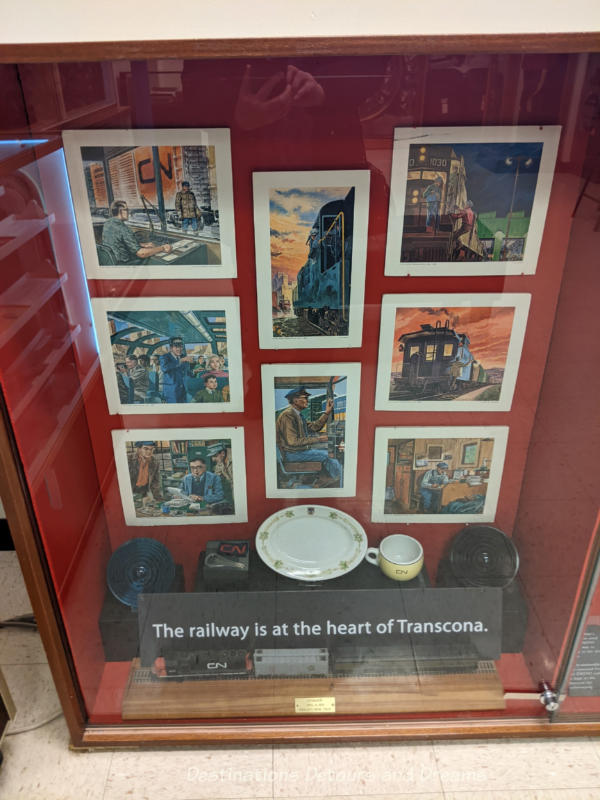
The railway is at the heart of Transcona, so you are likely to find railway-related displays at any time. Below are a sampling of some other displays.
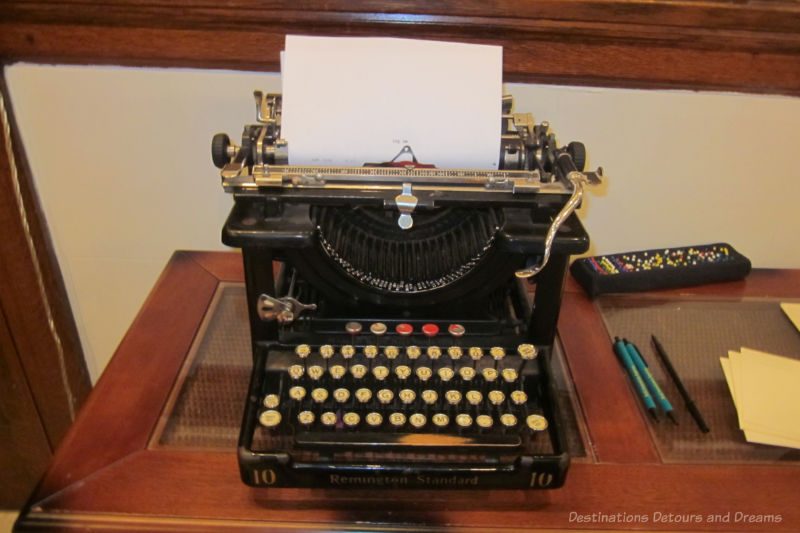
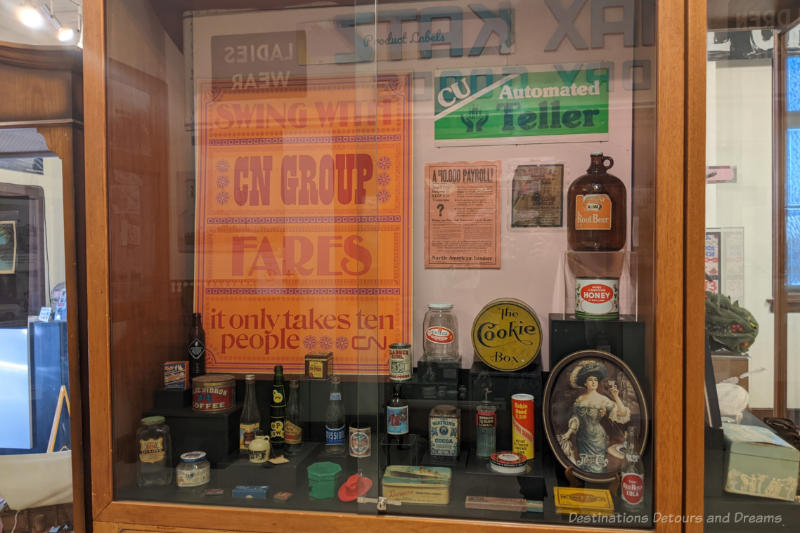
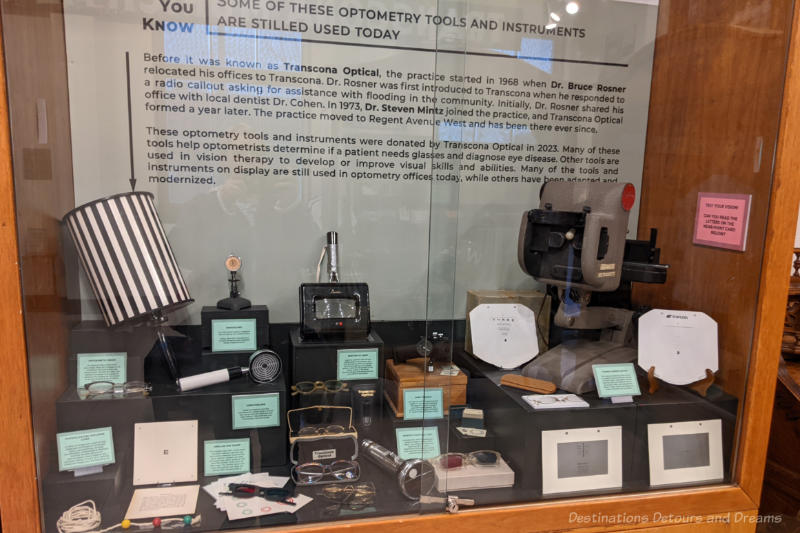
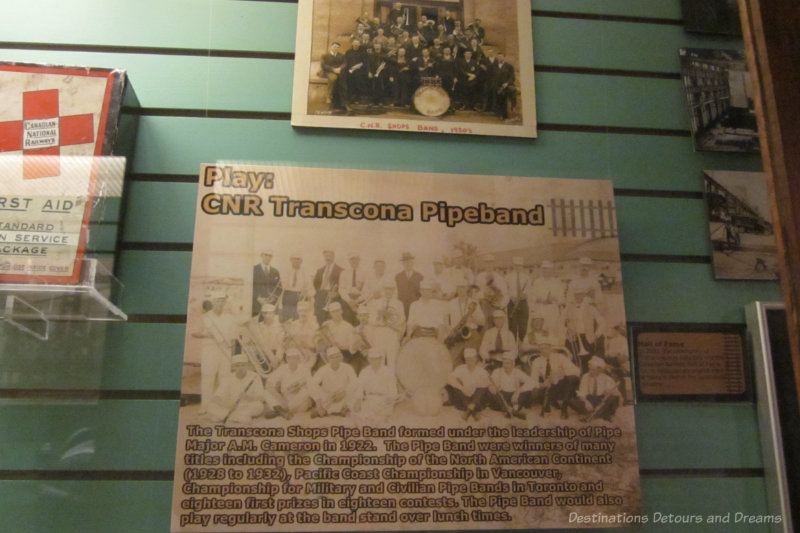
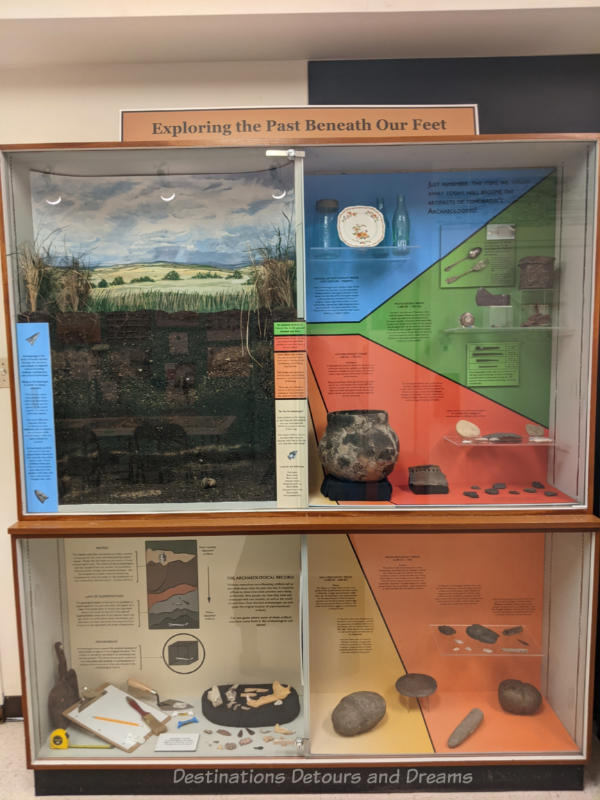
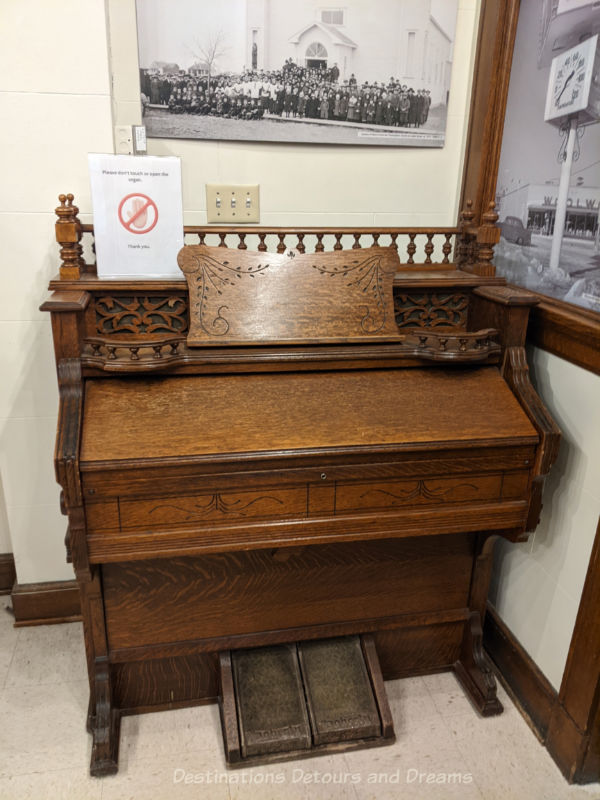
The museum has a few mini-displays at other sites in Transcona: the Transcona Library, the East End Community Club, and the Transcona Legion. The museum conducts historical walking tours during the summer. It is also responsible for the CN2747 steam locomotive on display in Transcona’s Rotary Heritage Park. This was the first steam locomotive built in western Canada. It is also one of the places featured in my book 111 Places in Winnipeg That You Must Not Miss.
Never miss a story. Sign up for Destinations Detours and Dreams free monthly e-newsletter and receive behind-the-scenes information and sneak peeks ahead.
PIN IT
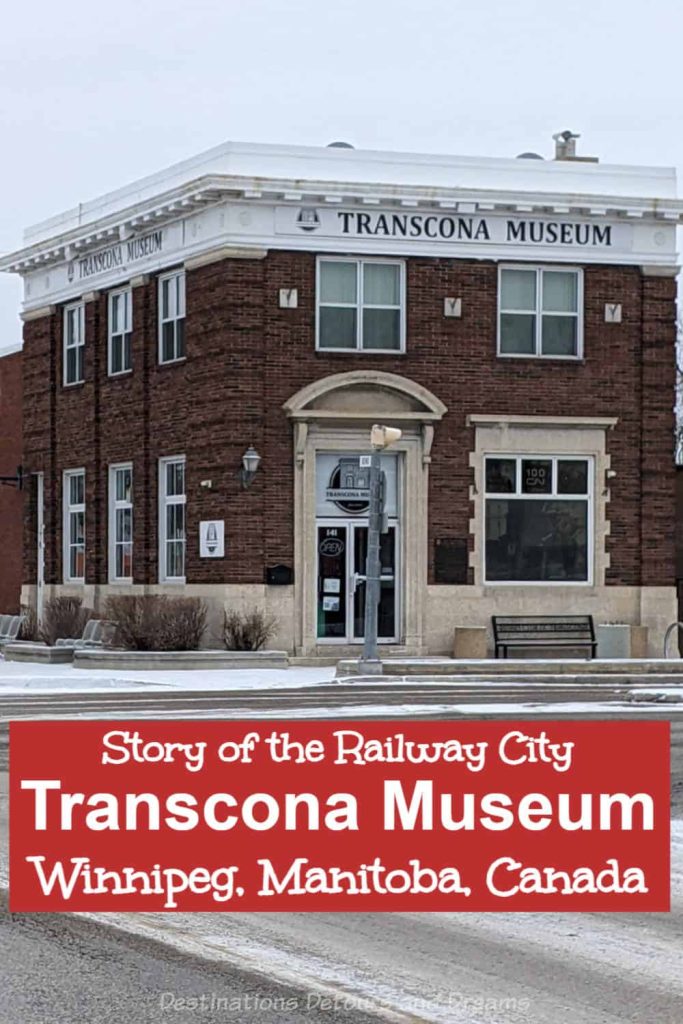
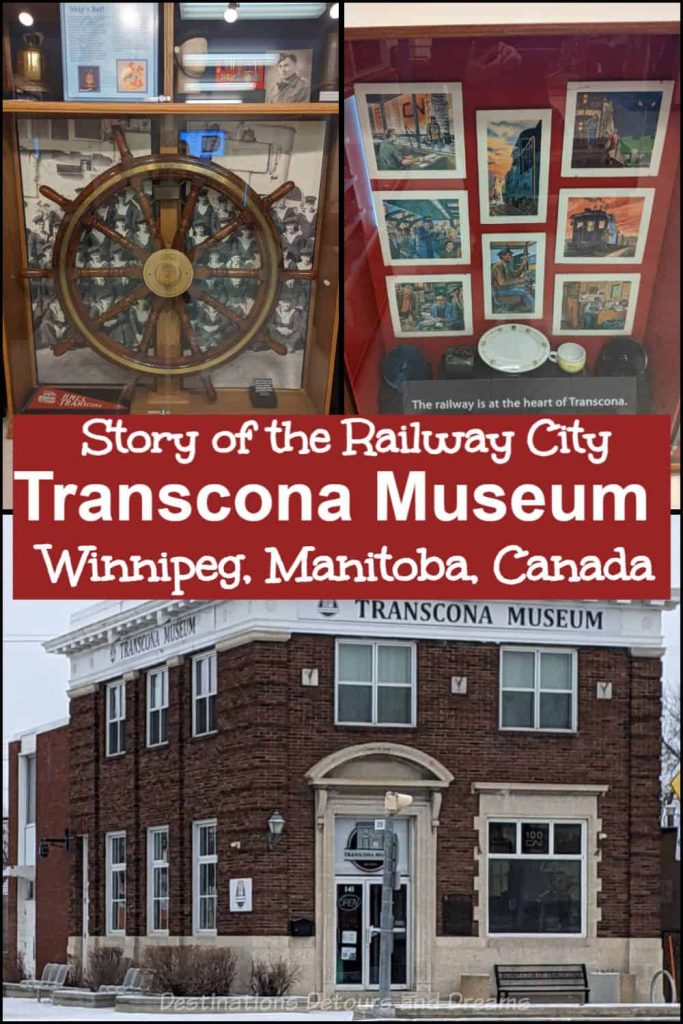

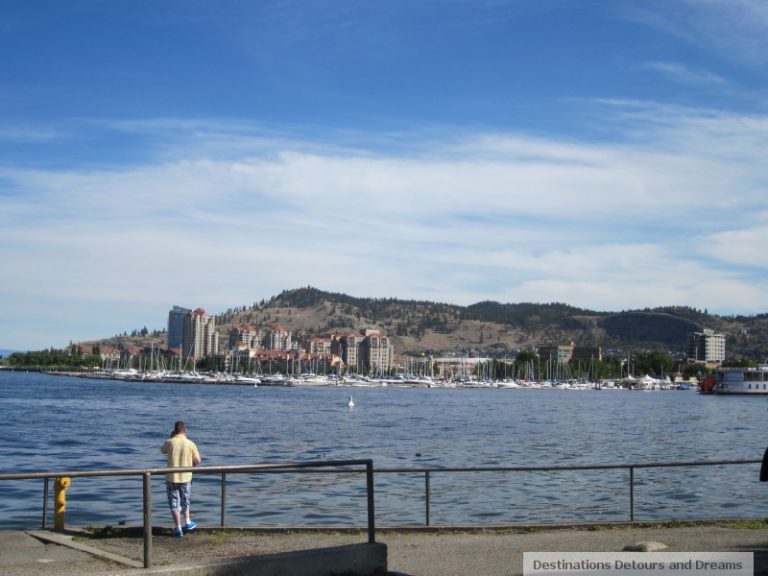
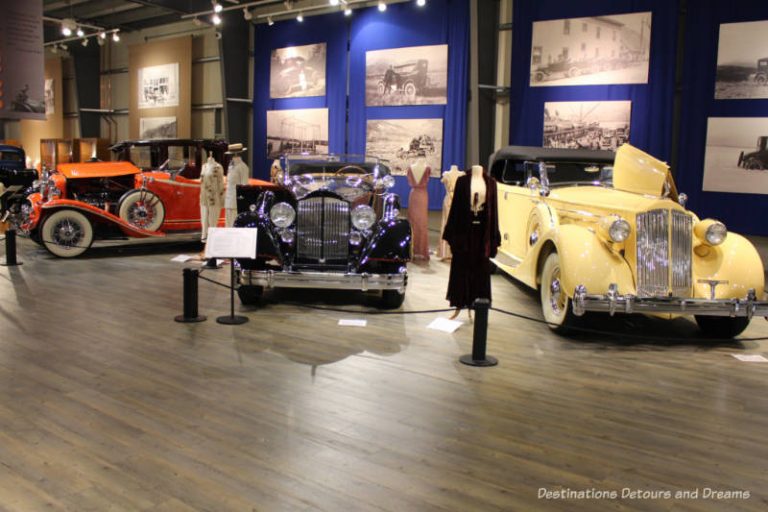
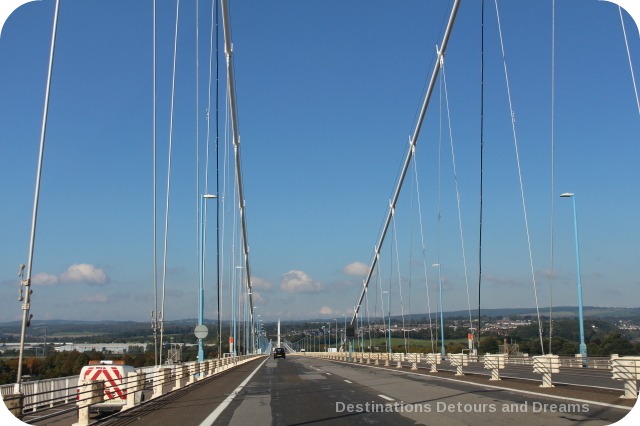
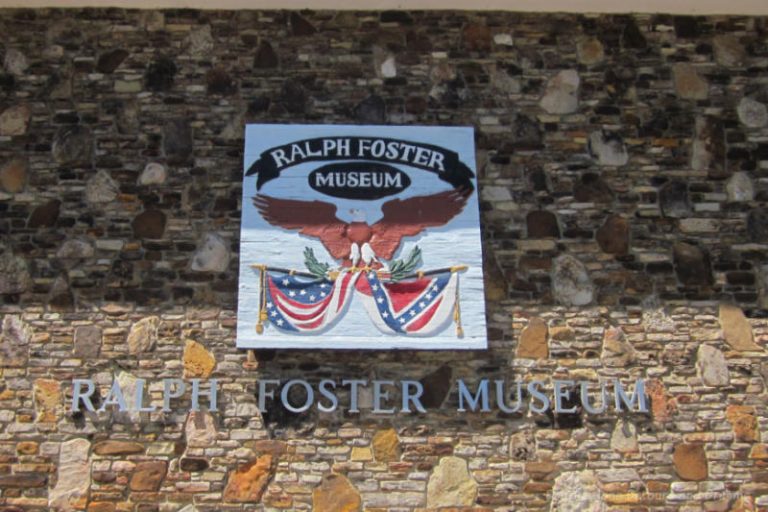
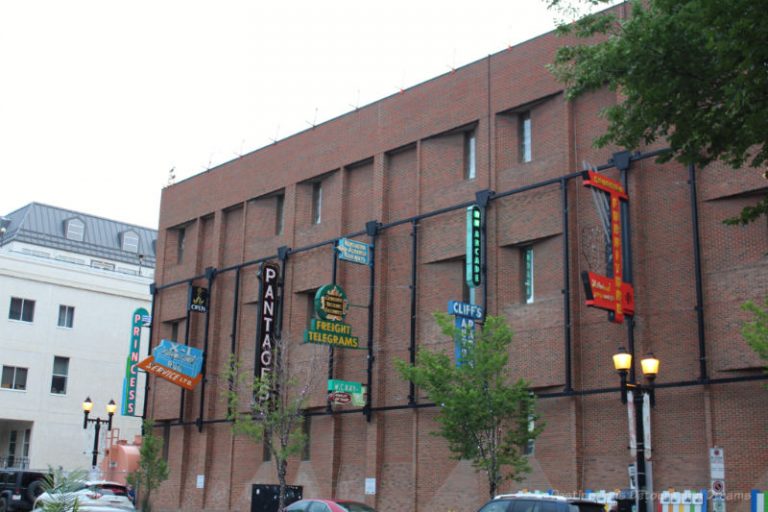
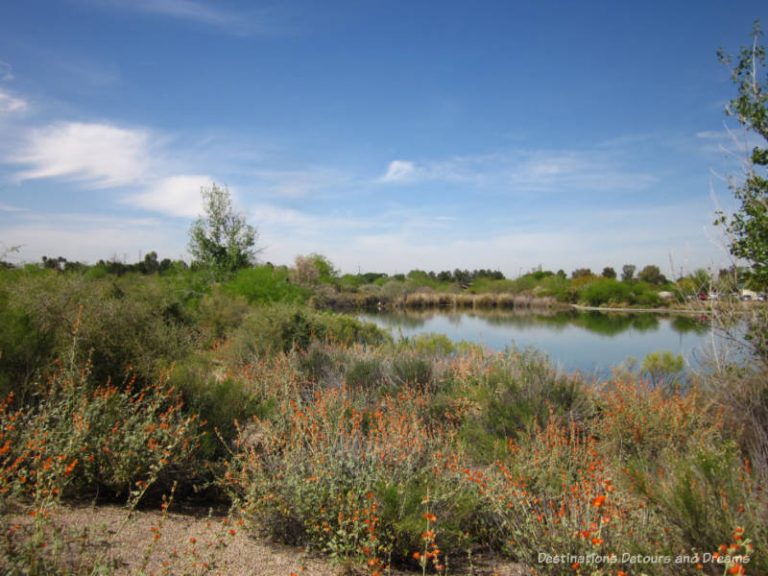
It has been interesting to read these pieces about the different parts of what is now modern day Winnipeg. I’m sure they’re all celebrating the hockey team today.
The present-day neighbourhoods have been shaped by their individual histories. And yes, lots of hockey celebrations right now.